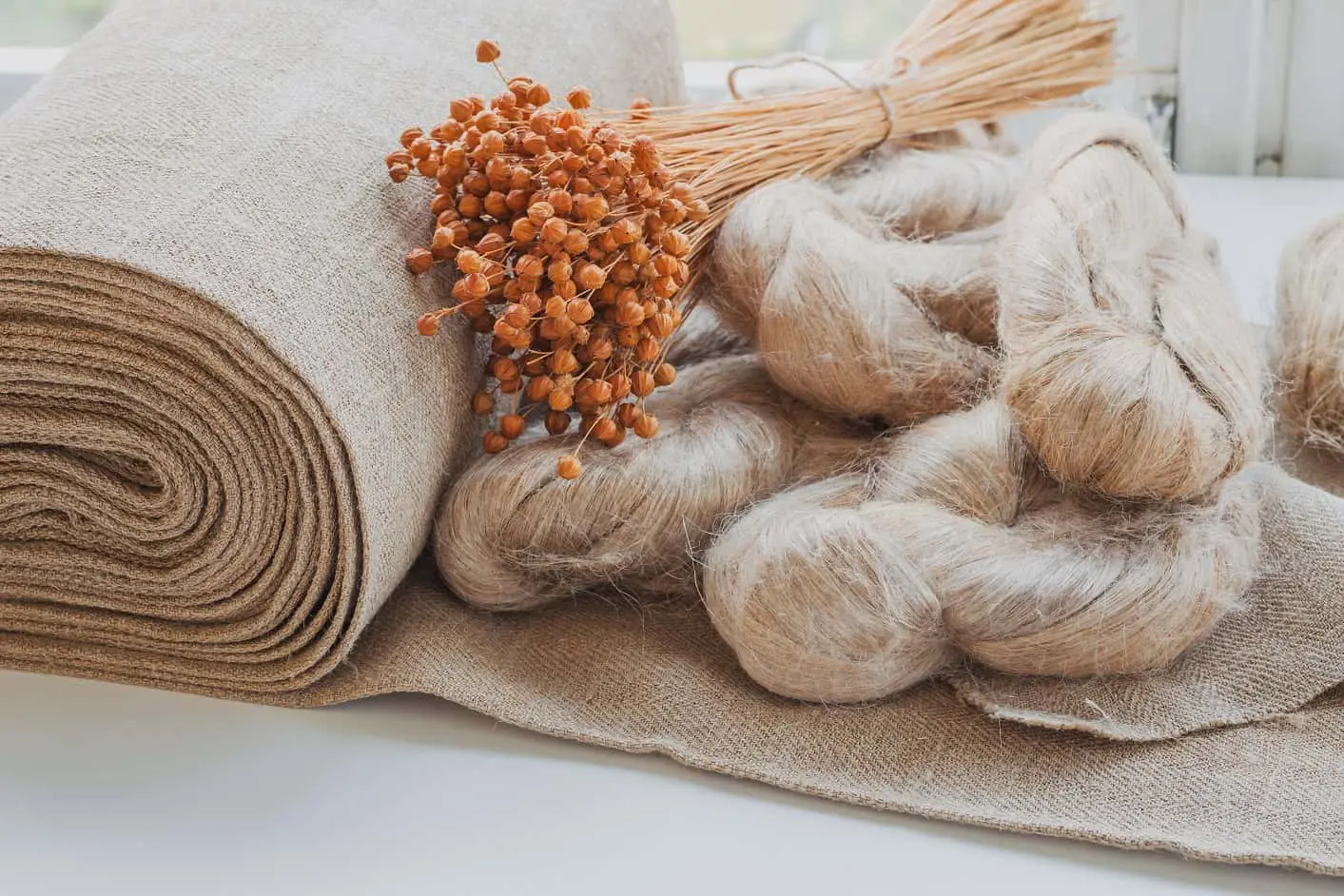There’s something effortlessly elegant about linen. Maybe it’s the soft, natural texture, or the way it gently sways with each step. For centuries, linen has been associated with purity, quality, and a relaxed lifestyle, yet it remains one of the most practical and durable textiles in the world.
Today, as more people lean into conscious consumerism and embrace comfort without compromising style, linen is enjoying a well-deserved revival. From fashion to home décor, from DIY sewing projects to sustainable living, linen is making its mark.
In this guide, we’ll explore everything you need to know about linen: what it is, how it’s made, how to wear it, sew with it, and take care of it. If you’re a fashion enthusiast, a home sewist, or simply curious about sustainable materials, this is your go-to handbook for embracing linen in your lifestyle.
Understanding Linen
What is Linen?
Linen is a natural textile made from the fibers of the flax plant (Linum usitatissimum). Known for its cool touch and lived-in texture, linen is one of the oldest fabrics in the world, dating back thousands of years. Its unique charm lies in its simplicity, it’s crisp yet soft, strong yet breathable, and has an earthy elegance that other fabrics often try to imitate.
Unlike synthetic fibers, linen is plant-based and undergoes minimal processing. The inner stalk of the flax plant contains long, strong fibers that are separated, spun into yarn, and woven into cloth. The result is a textile that gets better with age, softer, more supple, and even more comfortable the more you use it.
Key qualities that make linen stand out:
- Breathability: Allows air to circulate freely, making it ideal for warm weather.
- Moisture-wicking: Absorbs perspiration without feeling damp.
- Durability: Stronger than cotton and less prone to pilling.
- Eco-friendliness: Naturally biodegradable and grown with minimal pesticides.
Linen also has a slightly irregular weave that adds character. It’s not always perfectly smooth, and that’s exactly what people love about it. The tiny slubs (or knots) in the yarn are part of its signature look.
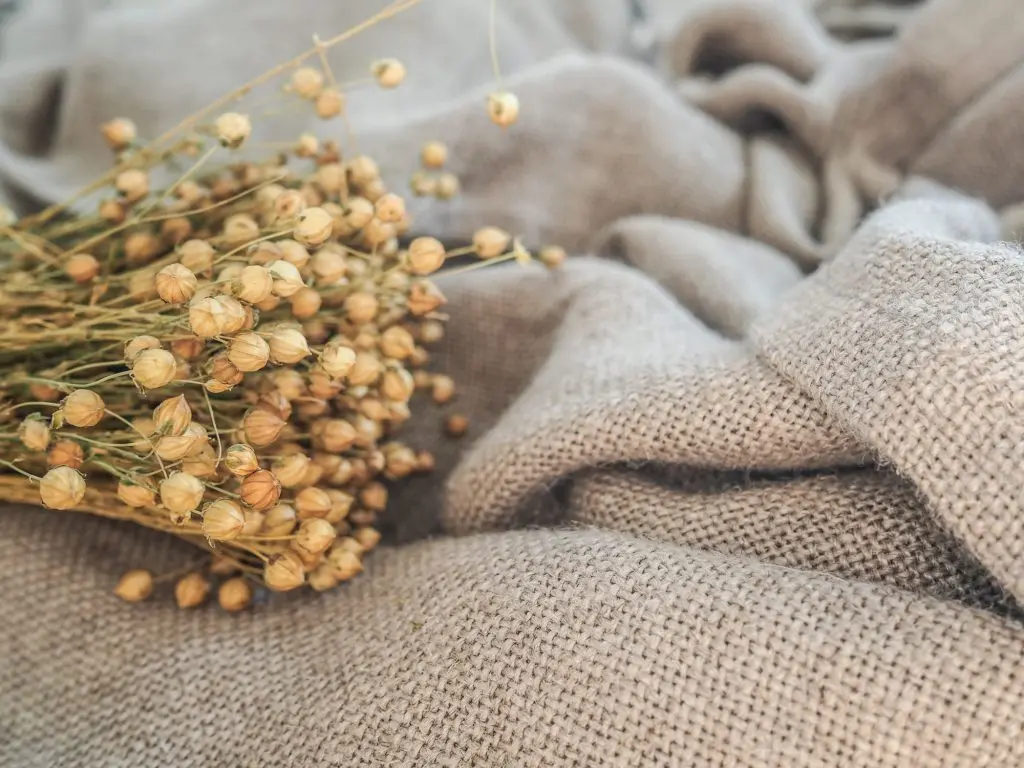
A Quick Look at Linen Textiles Through History
Linen has long held a place of honor in human civilization. In ancient Egypt, it was considered a fabric of nobility, used for clothing, burial shrouds, and ceremonial garb. The famous linen wrappings used in Egyptian mummification are a testament to their enduring strength and historical importance.
In Europe, especially in Ireland and Belgium, linen became an economic staple in the 17th and 18th centuries. Towns built their livelihoods around flax cultivation and linen weaving. To this day, regions like Flanders and Northern Ireland are renowned for high-quality linen production.
Historically, linen symbolized purity and refinement. Brides wore linen; royalty commissioned fine linen for their homes, and it was even used as a form of currency in some cultures. Over time, linen has transitioned from aristocratic wardrobes to everyday closets, without losing its classic appeal.
In our modern world, linen textiles are found in everything from relaxed summer wear and bed linens to hand-crafted accessories and upscale upholstery. It’s a bridge between ancient craftsmanship and contemporary living.
Types and Qualities of Linen Fabrics
Weaves and Finishes
Linen isn’t a one-style-fits-all fabric. Its beauty lies in its versatility, and much of that versatility comes from the way it’s woven and finished. The weave and finishing process significantly influence the texture, appearance, and ideal usage of linen fabrics.
Here are the most common types of linen weaves:
- Plain Weave Linen
This is the most classic and widely used weave. It produces a smooth, crisp surface with a slightly sheer appearance depending on the thickness of the yarn. Plain weave linen is often used in blouses, shirts, summer dresses, and household linens. - Twill Weave Linen
Recognizable by its diagonal ribbing, twill weave linen is denser and more durable. It drapes beautifully and is less prone to wrinkling compared to plain weave. This type is ideal for pants, skirts, jackets, and structured garments. - Herringbone Linen
Named for its V-shaped weaving pattern, herringbone linen has a subtle texture that adds visual interest and depth. It’s a favorite in upscale home decor, light coats, and tailored separates. - Loosely Woven Linen (Gauze or Open Weave)
This airy, breathable type of linen is very lightweight and semi-transparent. Perfect for scarves, summer wraps, curtains, or layered outfits, it offers a relaxed and romantic feel.
Finishes also play a role in determining the final feel and look of linen. Some linens are stonewashed or enzyme-washed to soften the fabric and give it a worn-in comfort from day one. Others are left raw for a more structured and crisp texture, ideal for tailored garments or home accents.
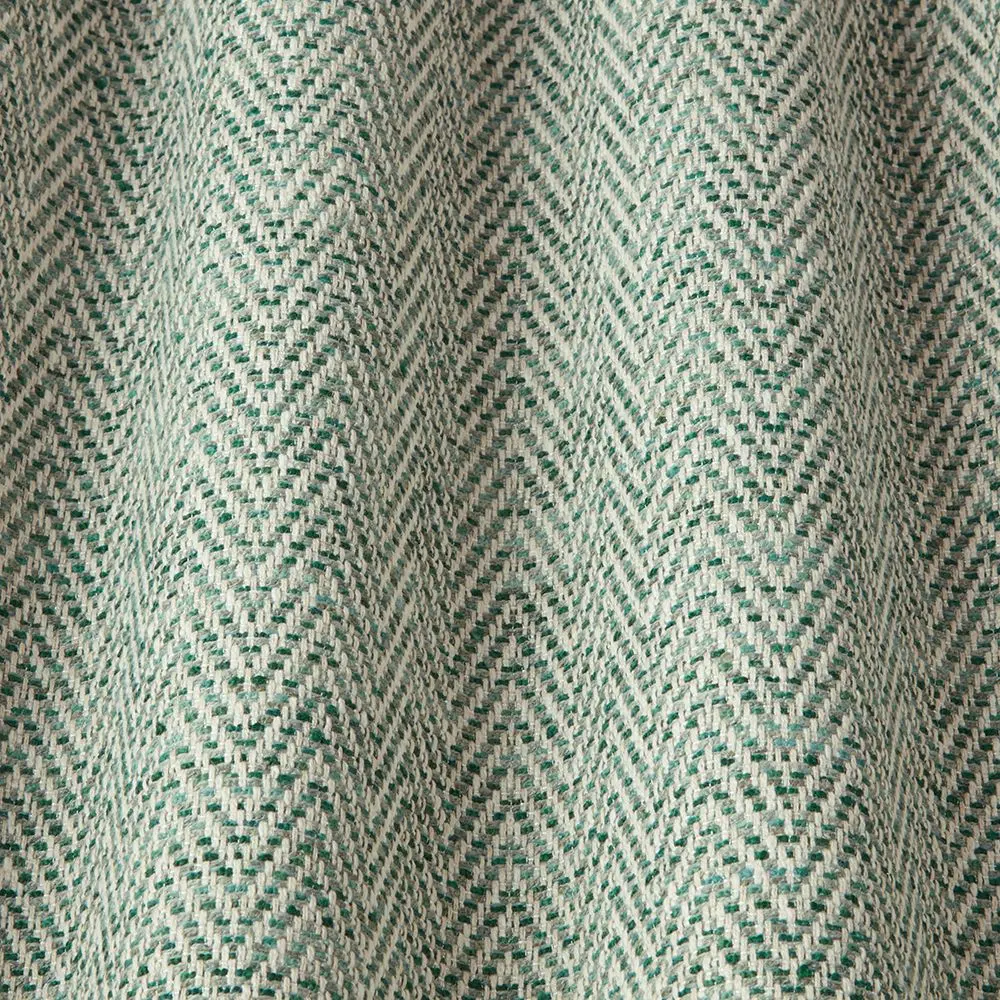
Choosing the Right Linen for Your Needs
Picking the right kind of linen depends largely on what you’re using it for. Each variety of linen fabric serves different purposes, and understanding this can make all the difference in your projects or wardrobe.
- For Clothing
Lightweight plain weave or stonewashed linen works best for garments like shirts, blouses, or summer dresses. Midweight twill or herringbone linen offers more structure and is great for trousers, jumpsuits, and outerwear. - For Home Decor
Heavier linens are commonly used for upholstery, curtains, cushion covers, and even wall panels. They offer both functionality and aesthetic appeal, especially in neutral tones that highlight linen’s natural texture. - For DIY or Craft Projects
Looser weave linens and linen blends work well for hand embroidery, table linens, or accessories like pouches and bags.
When shopping for linen fabrics, pay attention to:
- GSM (grams per square meter) – a good indicator of thickness
- Fiber content – 100% linen or blended with cotton/viscose
- Finish – whether it’s pre-washed, softened, or stiff
- Color fastness – how well it holds dye, especially for darker tones
Understanding these qualities ensures you get the best results from your sewing, decorating, or fashion endeavors. Linen may seem simple, but with the right knowledge, it becomes a powerhouse textile that balances comfort, structure, and elegance.
Linen in Fashion and Clothing Manufacturing
Why the Fashion Industry Loves Linen
In a world where fashion often chases speed and novelty, linen brings a refreshing pause. Its textured beauty, ease of movement, and connection to nature make it a favorite in the wardrobes of those who value comfort and quiet luxury. But the love for linen goes beyond aesthetics.
Here’s why the fashion world keeps coming back to it:
- Comfort in All Seasons
Linen breathes like no other fabric. It allows air to circulate and absorbs moisture quickly, making it perfect for hot and humid climates. Surprisingly, linen also retains warmth, making it suitable for layering in cooler months. - Timeless Style
From breezy summer dresses to smart linen suits, this fabric has a timeless charm. It doesn’t follow trends, it sets its own standard of relaxed elegance. Pieces made from linen have a natural drape and an unforced grace that make them feel elevated without trying too hard. - Worn-In Appeal
Linen softens beautifully with age. Every wash and wear gives it a more relaxed, almost vintage vibe. For designers and brands focused on slow fashion, this “aging gracefully” trait adds value, encouraging consumers to hold onto their garments longer. - Minimalist and Earthy Aesthetic
Linen’s natural slubs and neutral tones resonate with minimalist and bohemian aesthetics. It’s common in capsule wardrobes, beachwear, resort collections, and sustainable fashion labels. - Versatility
Linen works well in everything from casual wear to office-ready separates and high-fashion collections. It can be tailored into structured blazers or allowed to flow freely in kaftans and wrap dresses.
Because of its purity and visual texture, many designers intentionally avoid overprocessing linen, letting its natural character shine through.
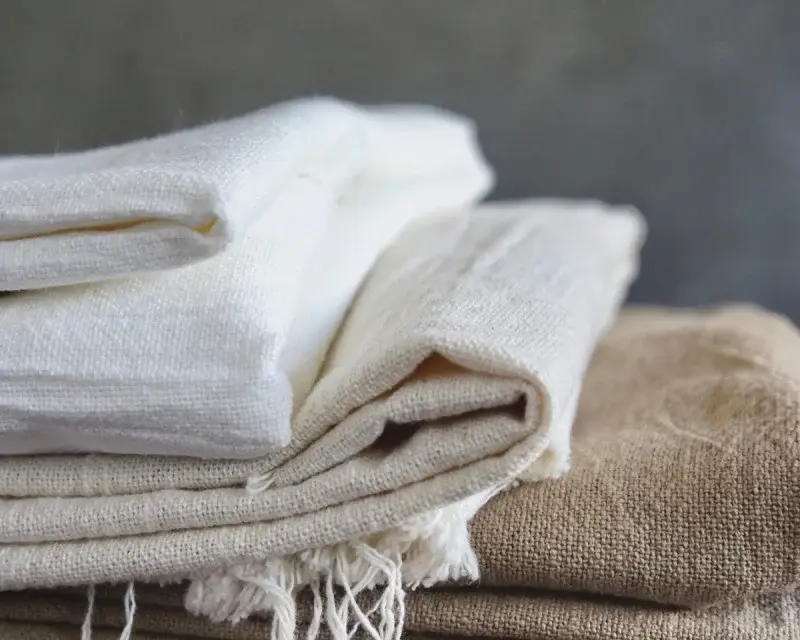
The Process of Clothing Manufacturing with Linen
The journey from flax seed to finished garment is fascinating, and part of what makes linen so special. Unlike synthetic fibers made in factories, linen begins in the soil and passes through the hands of skilled workers and artisans.
Here’s a simplified overview of the manufacturing process:
- Cultivating Flax
Flax is mainly grown in cooler climates with well-drained soil, with France, Belgium, the Netherlands, and parts of Eastern Europe leading global production. The plant matures quickly, usually within 100 days, and requires very little water, making it an eco-friendly crop. - Harvesting and Retting
Once the flax is harvested, it undergoes retting, a process that loosens the fibers from the woody stalk. This can be done naturally through dew or water retting, or with enzymes. - Breaking, Scutching, and Hackling
These mechanical steps separate the long, spinnable fibers from the shorter, coarser ones. The long fibers are then combed and aligned for spinning. - Spinning and Weaving
The cleaned fibers are spun into yarn, then woven into linen fabric. This step determines the weave and overall texture, plain, twill, or herringbone. - Finishing
The fabric may be bleached, dyed, softened, or stonewashed depending on its intended use. Some linens are left raw for a natural, rustic appeal. - Garment Construction
Finally, the fabric is cut and sewn into garments. Since linen can fray easily and shift slightly, manufacturers must use specialized techniques, such as reinforced seams or precise pressing, to maintain the integrity of the finished piece.
In essence, linen clothing reflects craftsmanship, from seed to stitch. Every step is slower and more deliberate, which is why true linen garments often carry a higher price tag, they’re not just clothes; they’re stories woven with intention.
Style Tips – Wearing Linen on Linen
The Art of Layering Linen Pieces
Wearing linen on linen might seem intimidating at first, how do you pair two relaxed, wrinkly textures without looking too casual or unfinished? The secret is in thoughtful styling. With the right combinations, linen on linen becomes the epitome of effortless chic.
Here are a few tips for mastering the look:
- Balance Fit and Flow
If you’re wearing a loose linen top, pair it with tapered trousers or a belted skirt to create structure. On the other hand, wide-leg linen pants look stunning with a cropped or neatly tucked-in linen shirt. It’s all about mixing flowy and fitted silhouettes. - Stick to a Soft Color Palette
Linen naturally lends itself to muted tones, think ivory, sand, sage, dusty rose, and charcoal. Wearing tonal colors (shades from the same color family) in your linen pieces creates a cohesive, calming look. - Play with Texture and Weave
Even though you’re using the same fabric type, variation in weave and weight adds interest. For instance, pair a loosely woven, airy top with a structured midweight bottom for contrast. - Add Natural Accessories
Linen pairs beautifully with accessories made from straw, wood, leather, and other natural materials. A straw hat, woven bag, or simple leather sandals can complete your outfit without overwhelming it. - Tuck, Tie, or Belt
Styling linen is often about creating definition. A simple front tuck, a side tie, or a linen belt can break up a boxy silhouette and add polish. - Embrace the Wrinkles
Linen wrinkles and that’s okay! In fact, it’s part of the fabric’s charm. The soft creases give it character and reflect a lived-in elegance. A light steam can take the edge off if needed, but don’t feel the need to over-press.
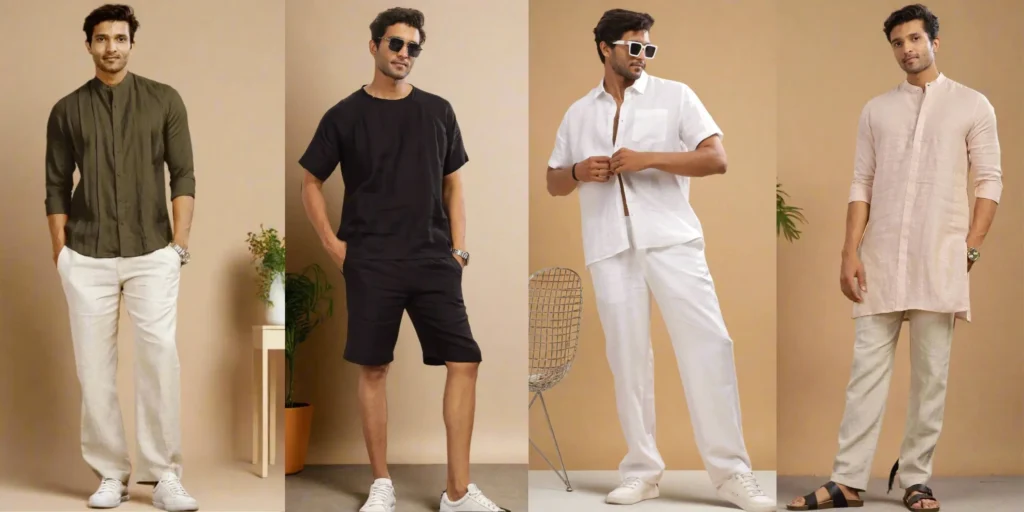
Seasonal Considerations
Linen is often seen as a warm-weather staple, but with the right approach, it can be worn comfortably year-round.
Spring and Summer:
This is linen’s natural territory. Go for breezy dresses, button-up shirts, drawstring pants, and relaxed co-ords. Keep layers light and breathable. Sandals, espadrilles, and open-toed shoes work perfectly with these looks.
Autumn:
Layering becomes key here. Throw a linen blazer over a linen blouse, or wear a chunky cardigan over a linen dress. Opt for deeper tones like olive, burgundy, and rust to reflect the season. Add boots and a scarf for a cozy finish.
Winter:
Yes, linen in winter is possible. Focus on heavyweight linen or linen blends (especially with wool). Layer under wool coats, wear long-sleeve linen shirts as base layers, and mix in heavier accessories. French seams and well-lined pieces will help insulate warmth.
The versatility of linen on linen styling proves just how adaptable this fabric really is. With the right combination, it can feel minimal, romantic, modern, or all three at once.

Linen and Sustainability
A Leader Among Sustainable Fabrics
In a world where fast fashion contributes heavily to pollution and textile waste, linen stands out as a thoughtful and responsible alternative. It’s not just a stylish choice, it’s a statement about how we treat the planet.
Linen ranks among the top sustainable fabrics for several compelling reasons:
- Minimal Water Use
Unlike cotton, which requires large amounts of water to grow and process, flax (the source of linen) is naturally resilient and thrives on rainfall alone. This drastically reduces the water footprint. - Little to No Pesticides
Flax can grow well without synthetic fertilizers or pesticides. This is good news for both the environment and the farmers working the fields. - Low Waste
Nearly every part of the flax plant is used during processing. The leftover stalks can be repurposed into insulation materials, animal bedding, or even paper. This contributes to a nearly zero-waste production cycle. - Biodegradability
100% linen fabric, when untreated and undyed with synthetic chemicals, is fully biodegradable. When it’s finally time to retire a linen piece, it can return to the earth without leaving a trace, unlike synthetic textiles that may take hundreds of years to break down. - Durability and Longevity
Linen is famously long-lasting. A well-made linen garment can last for decades, especially if cared for properly. This reduces the need for constant repurchasing and helps combat overconsumption.
Sustainability isn’t just about what we wear, it’s about how long we wear it, and how we treat it once we’re done. Linen’s entire lifecycle, from flax seed to finished product, tells a story of balance with nature.
Making Conscious Choices
Choosing linen is a great first step, but it doesn’t end there. As consumers, we can go even further in supporting sustainability by being mindful of how we buy and use linen products.
Here are a few ways to make your linen choices even more impactful:
- Support Transparent Brands
Look for clothing labels and textile producers that disclose how and where their linen is sourced. Brands that prioritize ethical labor and eco-friendly processing add integrity to the value of the final product. - Choose Natural or Plant-Based Dyes
Naturally dyed linens are gentler on the environment and often safer for sensitive skin. Earthy tones, indigo, turmeric yellow, or muted greens are beautiful and sustainable. - Opt for Classic, Timeless Designs
The more versatile your linen piece is, the more you’ll wear it. Neutral-colored button-downs, well-fitted trousers, or midi dresses will never go out of style, and will serve you through seasons and years. - Repair and Repurpose
Got a tear in your favorite linen shirt? Mend it using visible mending or embroidery. A stained napkin? Turn it into a pouch. Linen is easy to reuse, and repurposing extends its useful life. - Invest, Don’t Accumulate
Because linen lasts, it’s better to buy fewer, higher-quality pieces than to fill your wardrobe with items that won’t survive a year. When you invest in linen, you’re investing in longevity.
Sustainability is often about shifting our mindset. Linen invites us to slow down, live simply, and appreciate the beauty of natural materials. Every stitch and seam tells a story of respect, for the earth, the maker, and the wearer.
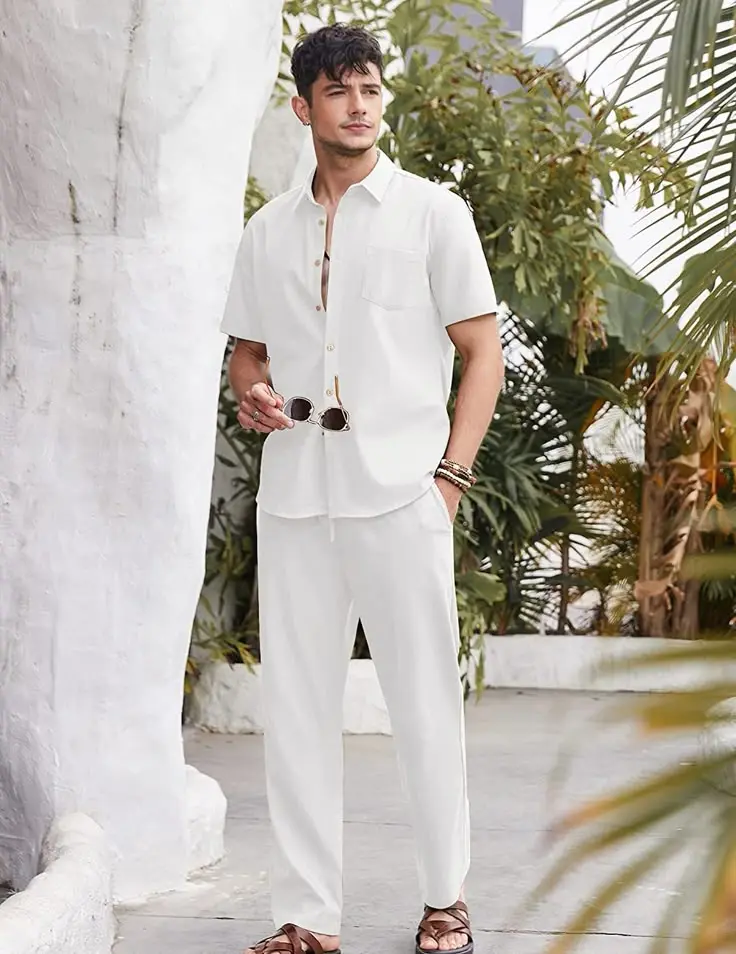
Sewing with Linen
Sewing with linen is a joy that many makers come to appreciate deeply. It drapes beautifully, holds its shape well, and adds a handcrafted, earthy character to whatever you create, whether it’s a wardrobe staple, a home textile, or a thoughtful gift.
Yet, because linen has its quirks (like fraying and shifting), it helps to understand how to work with it before you begin. With the right approach and tools, you’ll find that linen is one of the most rewarding fabrics to sew.
Getting Started with Your Sewing Kit
Before you thread the needle, it’s important to assemble the right tools and prepare your workspace. While your basic sewing kit may already have most of what you need, here are a few linen-specific essentials and tips:
- Sharp Fabric Scissors or Rotary Cutter: Linen fibers are strong, so a sharp blade ensures clean, precise cuts.
- Fine Pins or Clips: Linen can shift slightly, especially if it’s loosely woven. Use fine glass-head pins or sewing clips to hold seams in place without distorting the fabric.
- Sewing Machine Needles: Choose a universal or sharp needle (size 80/12 or 90/14) depending on your linen’s weight.
- Seam Finishing Tools: Overlockers, pinking shears, or zigzag stitch settings help control fraying edges.
- Pre-wash and Press: Always pre-wash your linen fabric cloth in the same way you’ll care for the finished item. This helps prevent shrinkage and softens the fabric. Iron it before cutting for best results.
Working with linen may feel a bit rustic at first, but once you get the hang of it, it opens up a world of beautiful possibilities.
Best Sewing Patterns for Linen Projects
Linen works exceptionally well with relaxed, breathable designs that highlight its natural texture. Whether you’re sewing your own clothes or creating handmade items for the home, here are some beginner- and intermediate-friendly ideas to consider:
For Clothing:
- Loose Tops and Blouses: A classic boxy top or peasant blouse lets the fabric shine and is beginner-friendly.
- Wrap Dresses or Tunics: Flowy, feminine patterns in midweight linen give beautiful movement.
- Elastic-Waist Trousers: Soft, wide-leg linen pants are great for both comfort and style.
- Simple Jumpsuits or Rompers: These structured-yet-comfortable pieces elevate casualwear.
For Home and Accessories:
- Table Runners, Placemats, or Napkins
- Curtains or Pillow Covers
- Reusable Gift Bags or Fabric Pouches
When choosing sewing patterns, go for styles with clean lines and minimal fuss. Linen lends itself well to uncomplicated silhouettes where the texture does the talking.
Mastering Techniques Like French Seams
Because linen tends to fray, seam finishing is more than just a cosmetic detail, it’s essential to the durability of your projects. One elegant and professional option is the French seam, especially for garments or lightweight linen projects.
What is a French Seam?
It’s a two-step seam construction method that encloses raw edges within the seam itself. It’s ideal for unlined garments, light or semi-sheer linen, and gives your piece a clean interior finish, no loose threads in sight!
How to Sew a French Seam on Linen:
- Place wrong sides together (yes, the opposite of what you’re used to) and sew a narrow seam (around ¼”).
- Trim the seam allowance to about ⅛” and press the seam open.
- Fold the fabric so right sides are together, encasing the trimmed edge. Press.
- Sew a second seam about ⅜” from the folded edge.
- Press the final seam flat for a crisp, polished look.
French seams take a bit more time but are well worth it, especially when working on garments you want to treasure.
For thicker or more structured linen, consider using a flat-felled seam or overlocking the edges if French seams feel too bulky.
Sewing with linen is more than just a craft, it’s a calming, tactile experience that connects you with a centuries-old tradition. Whether you’re stitching something simple or ambitious, working with this fabric invites you to slow down and enjoy the process.
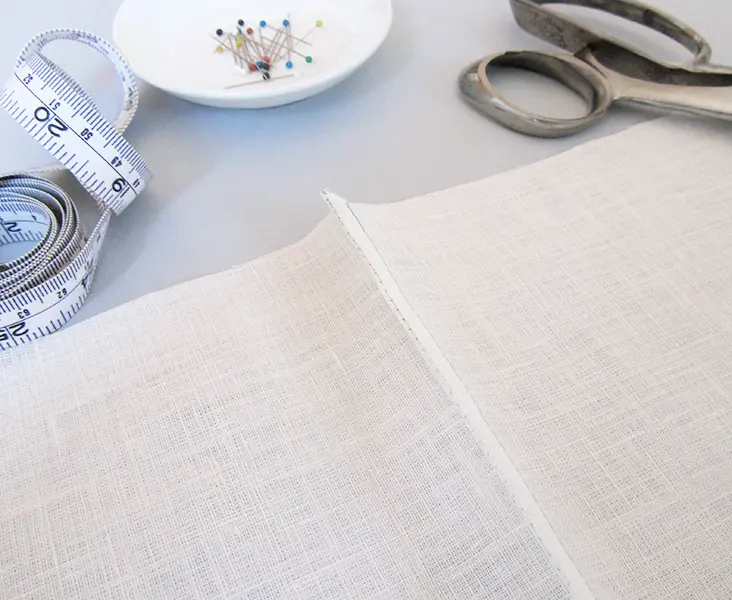
Care and Maintenance of Linen Fabric Cloth
Linen is naturally strong and long-lasting, but like anything made with care, it deserves a bit of thoughtful attention. The way you clean, store, and handle linen can make a huge difference in how it ages. Fortunately, maintaining linen doesn’t require fancy products or elaborate routines, just gentle, consistent care.
Washing and Drying
Washing Linen
Linen responds best to cool or lukewarm water and mild detergent. Whether washing by hand or machine, keep things gentle:
- Machine wash on a gentle cycle with similar colors.
- Use mild, bleach-free detergent to protect the fibers.
- Avoid overloading the machine to let linen breathe and move freely.
- Cold or lukewarm water is best (hot water may cause excessive shrinkage).
For delicate or handmade items (especially those with embroidery or seams like French seams), hand washing is often the safer route.
Drying Linen
Air drying is ideal. Line-drying not only preserves the fiber strength but also gives linen that soft, sun-kissed finish.
If you must tumble-dry:
- Use a low heat setting.
- Remove while still slightly damp to reduce deep wrinkles.
- Smooth and lay flat or hang to finish drying.
Note: Linen softens naturally with every wash. It’s one of the few fabrics that actually improves with age, so skip fabric softeners and let the fibers evolve naturally.
Storing and Ironing Linen
Storing Linen
Proper storage helps your linen stay fresh and ready to use. Here’s how to keep it in top shape:
- Store in a cool, dry place: ideally, away from direct sunlight to prevent fading.
- Avoid plastic bins or vacuum-sealed bags as they can trap moisture. Opt for breathable cotton or linen storage bags.
- Refold your linen garments occasionally to avoid long-term creases in the same places.
If you’re storing linen clothing for a season, add cedar balls or lavender sachets to deter pests naturally.
Ironing Linen
One of the charming quirks of linen is its tendency to wrinkle—and many people love it for that. However, if you prefer a crisp, polished look:
- Iron while the fabric is slightly damp.
- Use a medium-hot iron with steam for best results.
- Iron on the reverse side to avoid shine marks, especially on darker or dyed linens.
- Hang immediately after ironing to help maintain the pressed finish.
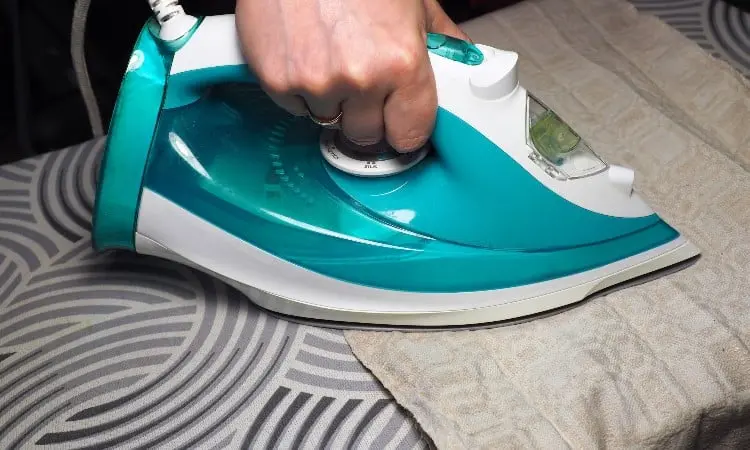
Alternatively, a garment steamer is a quick and linen-friendly tool for refreshing wrinkled pieces without applying direct heat.
Embracing the Wrinkle
Remember, linen isn’t meant to look stiff or perfectly pressed. Its casual creases and soft rumples are part of its identity. Embracing that relaxed elegance is often what makes linen so appealing.
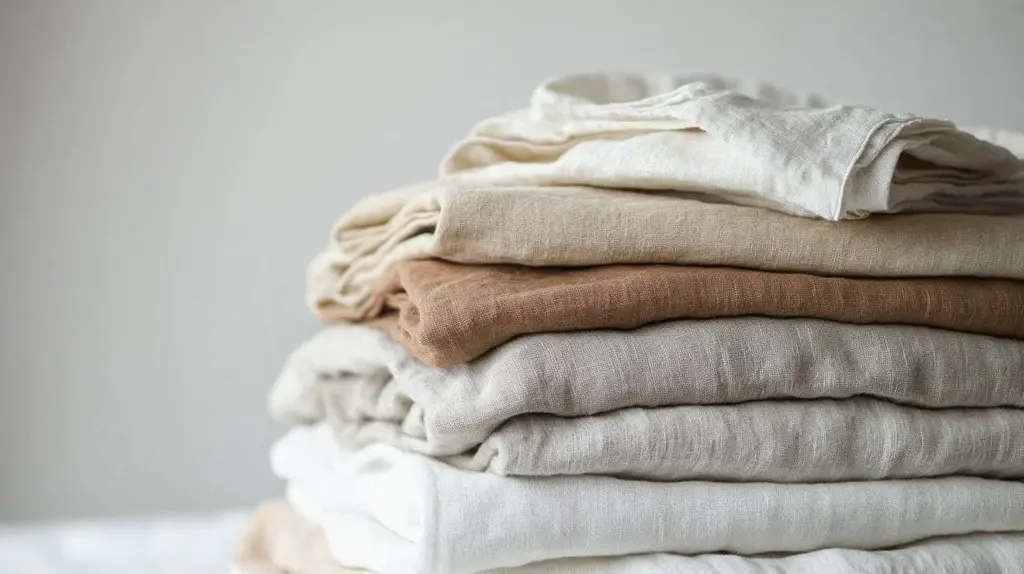
Final Tip:
The more you care for linen gently, the more it rewards you with its evolving softness, strength, and natural beauty. Treat it like a friend, not a burden, and it will serve you well for years to come.

